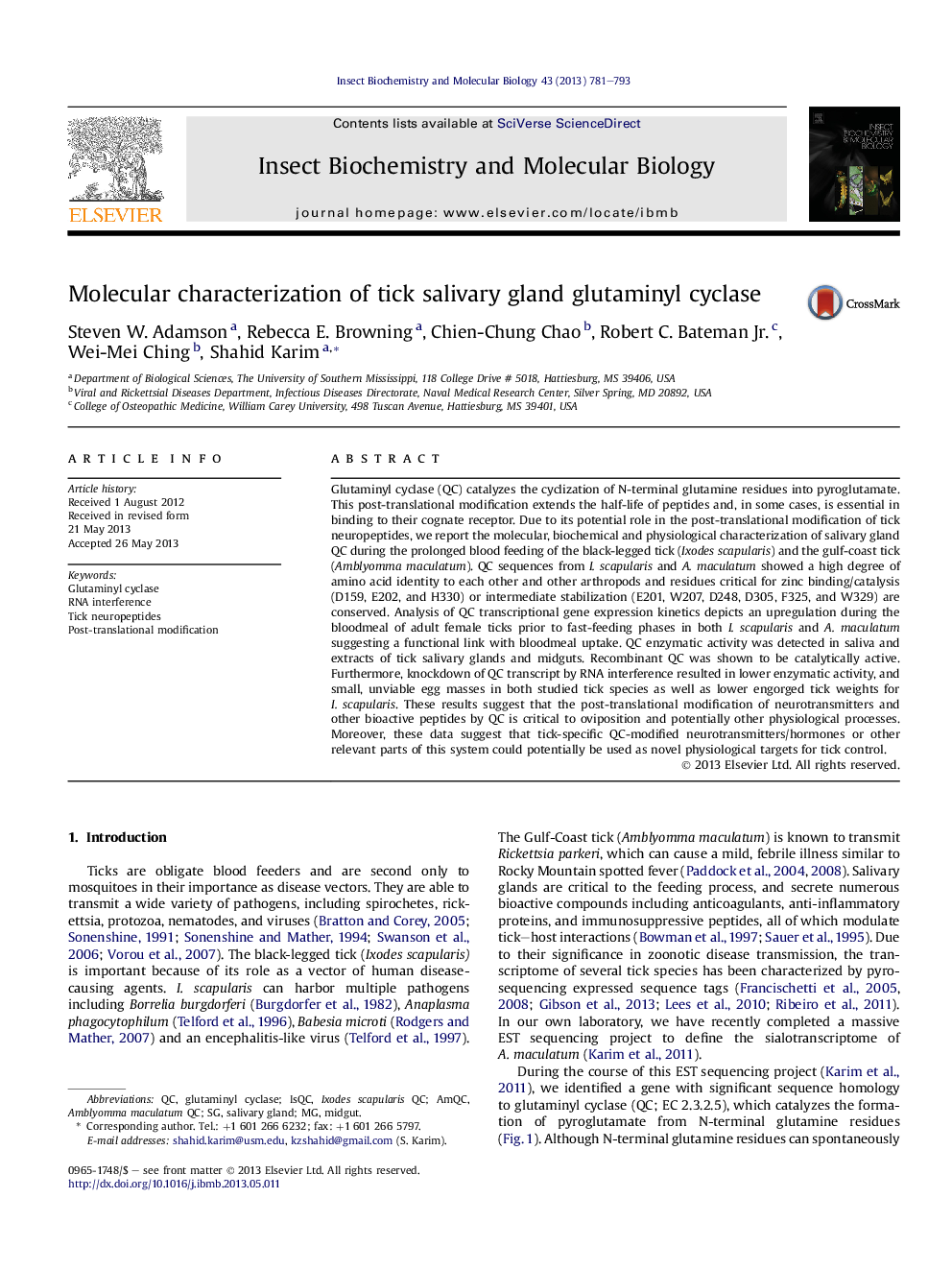| کد مقاله | کد نشریه | سال انتشار | مقاله انگلیسی | نسخه تمام متن |
|---|---|---|---|---|
| 1982132 | 1062257 | 2013 | 13 صفحه PDF | دانلود رایگان |

• Two tick QC sequences had all the conserved residues involved in catalysis and intermediate stabilization.
• QC gene expression kinetics suggest a functional link between QC activity and bloodmeal uptake.
• QC enzymatic activity was detected in tick extracts, saliva, and by recombinant tick QC.
• Ticks injected with QC-dsRNA laid small, inviable egg masses, suggesting QC is critical for embryogenesis.
• These data suggest a functionally significant role for the pyroglutamation of corazonin, sulfakinin, and periviscerokinin.
Glutaminyl cyclase (QC) catalyzes the cyclization of N-terminal glutamine residues into pyroglutamate. This post-translational modification extends the half-life of peptides and, in some cases, is essential in binding to their cognate receptor. Due to its potential role in the post-translational modification of tick neuropeptides, we report the molecular, biochemical and physiological characterization of salivary gland QC during the prolonged blood feeding of the black-legged tick (Ixodes scapularis) and the gulf-coast tick (Amblyomma maculatum). QC sequences from I. scapularis and A. maculatum showed a high degree of amino acid identity to each other and other arthropods and residues critical for zinc binding/catalysis (D159, E202, and H330) or intermediate stabilization (E201, W207, D248, D305, F325, and W329) are conserved. Analysis of QC transcriptional gene expression kinetics depicts an upregulation during the bloodmeal of adult female ticks prior to fast-feeding phases in both I. scapularis and A. maculatum suggesting a functional link with bloodmeal uptake. QC enzymatic activity was detected in saliva and extracts of tick salivary glands and midguts. Recombinant QC was shown to be catalytically active. Furthermore, knockdown of QC transcript by RNA interference resulted in lower enzymatic activity, and small, unviable egg masses in both studied tick species as well as lower engorged tick weights for I. scapularis. These results suggest that the post-translational modification of neurotransmitters and other bioactive peptides by QC is critical to oviposition and potentially other physiological processes. Moreover, these data suggest that tick-specific QC-modified neurotransmitters/hormones or other relevant parts of this system could potentially be used as novel physiological targets for tick control.
Figure optionsDownload high-quality image (205 K)Download as PowerPoint slide
Journal: Insect Biochemistry and Molecular Biology - Volume 43, Issue 9, September 2013, Pages 781–793